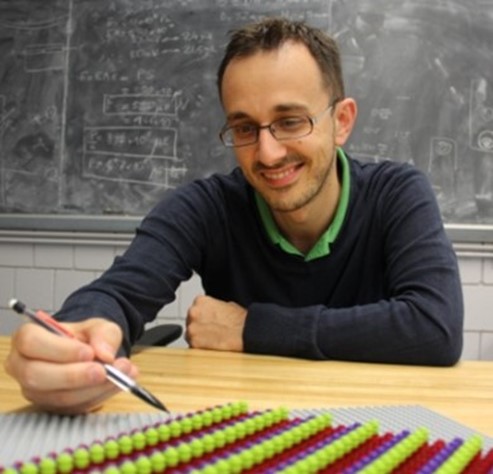
Abstract: Elastic metamaterials are structural materials that owe their unique wave manipulation capabilities to their complex internal architecture. Topological metamaterials are a special subclass of metamaterials whose behavior is directly controlled by the topology of their phonon bands. In this talk, I discuss the mechanics of a class of metamaterials known as topological Maxwell lattices. While these systems have been the object of extensive theoretical investigation, their classical treatment has been limited to ideal configurations and confined to the static limit. I will address the opportunities for design that open up when we account for the effect of structural non-idealities and we shift our focus to the dynamic behavior.
I will first discuss the dynamics of lattices in which the ideal hinges that appear in the theoretical models are replaced by structural ligaments capable of supporting bending deformation – a scenario practically encountered in lattices fabricated using cutting techniques or 3D printing. Aided by laser vibrometry experimental data, I will show how the zero-energy floppy edge modes predicted for ideal configurations morph into finite-frequency wave modes that localize on selected edges, resulting in asymmetric wave transport regimes. I will then address whether the topological attributes of Maxwell lattices, which are native to in-plane mechanics, can be exported to the out-of-plane response. I will show that, through appropriate design principles, it is possible to design bilayer structures in which coupling mechanisms transfer the in-plane topological polarization of the individual layers to the out-of-plane degrees of freedom, leaving a signature of topological polarization in the flexural response.
Biographical Sketch: Stefano Gonella is a Professor in the Department of Civil, Environmental and Geo- Engineering at the University of Minnesota. He received Ph.D. and M.S. in aerospace engineering from Georgia Tech in 2007 and 2005, respectively, following a Laurea, also in aerospace engineering, from the Politecnico di Torino (Italy) in 2003. Before joining the University of Minnesota, he spent 3 years as a post-doctoral associate at Northwestern University. His research interests revolve around the modeling, simulation and experimental characterization of dynamical phenomena in architected materials, phononic crystals, and elastic metamaterials. His latest efforts have been directed towards understanding the role of topological states of matter in the design of mechanical metamaterials. He is also interested in the development of methodologies for structural diagnostics through the mechanistic adaptation of concepts of machine learning and computer vision. He was recipient of the NSF CAREER award in 2015.